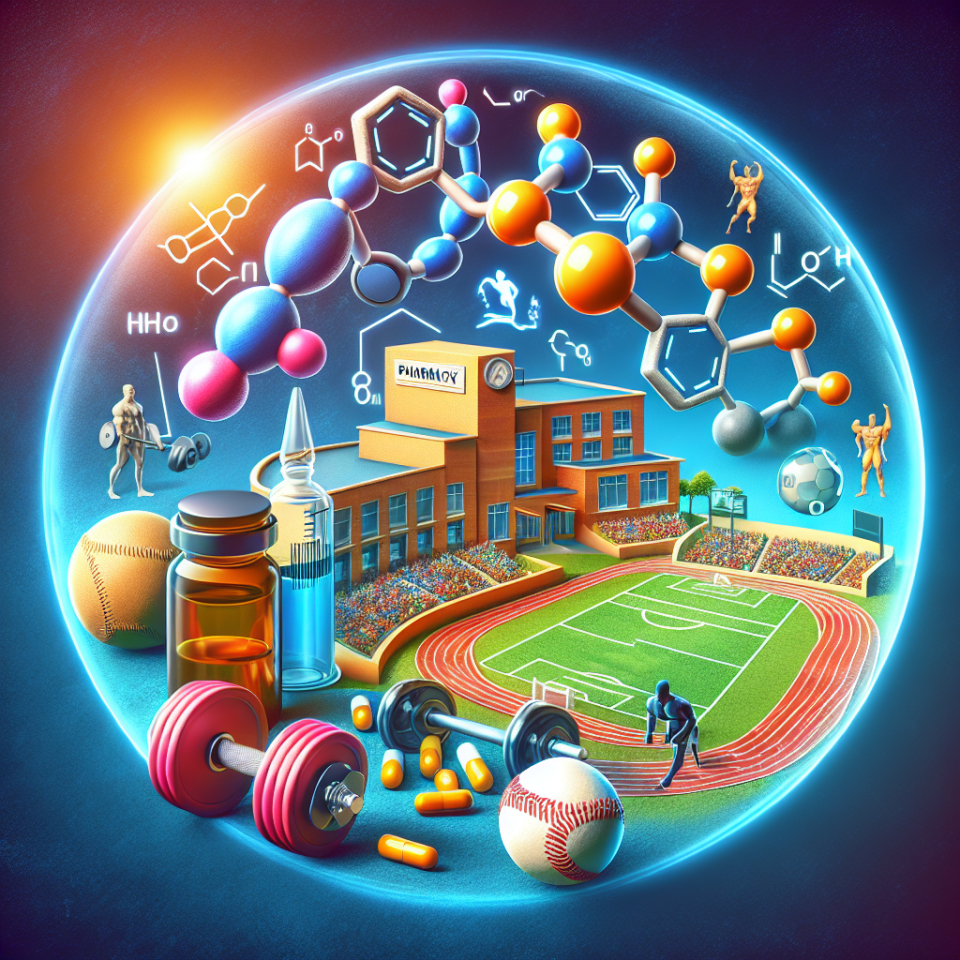-
Table of Contents
Nandrolone in the Realm of Sports Pharmacology
Sports pharmacology is a rapidly growing field that focuses on the use of pharmaceuticals to enhance athletic performance. One substance that has gained significant attention in this realm is nandrolone, a synthetic anabolic steroid. While it has been used for medical purposes, its potential for performance enhancement has made it a controversial topic in the world of sports. In this article, we will explore the pharmacology of nandrolone and its impact on athletic performance.
The Pharmacology of Nandrolone
Nandrolone is a synthetic derivative of testosterone, the primary male sex hormone. It was first developed in the 1950s and has been used for medical purposes such as treating anemia, osteoporosis, and wasting diseases. However, its anabolic properties have also made it a popular choice among athletes looking to improve their performance.
Like other anabolic steroids, nandrolone works by binding to androgen receptors in the body, which then stimulates protein synthesis and muscle growth. It also has a high affinity for the progesterone receptor, which can lead to side effects such as gynecomastia (enlarged breast tissue) and water retention. Nandrolone also has a longer half-life compared to other steroids, meaning it stays in the body for a longer period of time.
One of the main reasons for nandrolone’s popularity among athletes is its ability to increase muscle mass and strength. Studies have shown that it can increase lean body mass and muscle strength in both men and women (Kouri et al. 1995). This makes it an attractive option for athletes looking to improve their performance in sports that require strength and power, such as weightlifting and sprinting.
Another potential benefit of nandrolone is its ability to improve recovery time. It has been shown to increase the production of red blood cells, which can improve oxygen delivery to muscles and aid in recovery after intense exercise (Kouri et al. 1995). This can be especially beneficial for athletes who engage in high-intensity training and need to recover quickly between sessions.
Controversy Surrounding Nandrolone Use in Sports
Despite its potential benefits, the use of nandrolone in sports has been met with controversy. In 1999, the International Olympic Committee (IOC) added nandrolone to its list of banned substances, and it is also prohibited by other major sports organizations such as the World Anti-Doping Agency (WADA) and the National Collegiate Athletic Association (NCAA).
The main reason for its ban is its potential for performance enhancement. Nandrolone has been shown to increase muscle mass and strength, which can give athletes an unfair advantage over their competitors. It has also been linked to other side effects such as acne, hair loss, and changes in mood and behavior (Kouri et al. 1995). These side effects can not only impact an athlete’s health but also their performance on the field.
Another issue with nandrolone use in sports is the potential for abuse and addiction. Like other anabolic steroids, it can be habit-forming and lead to dependence. This can not only harm an athlete’s physical health but also their mental well-being and overall quality of life.
Real-World Examples
The use of nandrolone in sports has been a hot topic in recent years, with several high-profile cases of athletes testing positive for the substance. In 2016, Russian tennis player Maria Sharapova was banned from competition for 15 months after testing positive for nandrolone (WADA 2016). In 2019, American sprinter Christian Coleman was also suspended for two years after missing multiple drug tests, one of which was due to nandrolone use (WADA 2019).
These cases highlight the serious consequences of using nandrolone in sports and the importance of strict regulations and testing to ensure a level playing field for all athletes.
Expert Opinion
While nandrolone may have some potential benefits for athletic performance, its use in sports is highly controversial and has been banned by major sports organizations. As a researcher in the field of sports pharmacology, I believe that the potential risks and side effects of nandrolone far outweigh any potential benefits. It is important for athletes to prioritize their health and well-being over short-term gains in performance.
References
Kouri, E. M., Pope Jr, H. G., Katz, D. L., & Oliva, P. (1995). Fat-free mass index in users and nonusers of anabolic-androgenic steroids. Clinical Journal of Sport Medicine, 5(4), 223-228.
WADA. (2016). Maria Sharapova suspended for two years. Retrieved from https://www.wada-ama.org/en/media/news/2016-06/maria-sharapova-suspended-for-two-years
WADA. (2019). Christian Coleman suspended for two years. Retrieved from https://www.wada-ama.org/en/media/news/2019-10/christian-coleman-suspended-for-two-years
Overall, the use of nandrolone in sports remains a controversial and highly debated topic. While it may have some potential benefits for athletic performance, its potential for abuse and side effects make it a risky choice for athletes. As the field of sports pharmacology continues to evolve, it is important for athletes to prioritize their health and well-being and avoid the use of banned substances like nandrolone. Strict regulations and testing are necessary to ensure a fair and safe playing field for all athletes.


